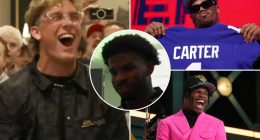In light of the recent mysterious death of Obama’s personal chef in a pond next to the former president’s property, this clip of Anthony Weiner (a longtime Clinton proxy and nominal husband of Hillary confidant Huma Abedin) being questioned on the suicide epidemic among Clinton associates is apropos.
During Weiner’s appearance on his show, radio host Patrick Bet-David raises the specter of the Clinton death machine by reading a list of 46 alleged Clinton associates suicided/murdered over the years.
(In all transparency, I have not vetted the evidence for every name on the list, as the veracity of such claims is not germane to this story.)
Weiner immediately, predictably dismisses the charges as “conspiracy theory,” etc. and refuses to engage in any of the substance. Doubtless, having swum in elite political circles for decades, he knows details he could have added to numerous names on the list.
His demeanor becomes increasingly unhinged as the segment continues as he impugns PBD’s integrity and attacks the source as “insane.” He then tries the tactic of positioning himself as a defender of the dead names as if PBD is maligning their character by speculating about the cause of their death. It’s really quite a 19-minute spectacle.
Read Related Also: Matthew Borromei from Kalgoorlie-Boulder, Western Australia dies in scooter crash in Sicily, Italy
Methinks thou dost protest too much, Sir Weiner.
As PDB correctly points out, Weiner’s is exactly the kind of reaction that fuels the kind of speculation about the Clinton Inc. body count of dead aides, former business partners, etc. “Your reaction is an answer,” PBD retorts.
Weiner, by reacting the way he does, only serves to raise the suspicions of the viewer, in effect encouraging him to dig deeper into the mystery whereas, had Weiner reacted more calmly, he likely would have never thought about it again after the podcast.
Related: Hannity Humiliates Anthony Weiner During Interview
This well-documented phenomenon is called the Streisand Effect, defined by Britannica as a “phenomenon in which an attempt to censor, hide, or otherwise draw attention away from something only serves to attract more attention to it,” so named for a 2003 lawsuit that actress Barbara Streisand filed against a photographer to get a legally obtained photograph of her property scrubbed from the web. Streisand’s lawsuit had the opposite of its intended effect, drawing exponentially more eyeballs to the photograph after the lawsuit made its way into the media.
The Streisand Effect is, of course, compounded by the modern corporate state censorship regime that seeks to put certain topics off limits, even beyond mere idle speculation on a radio show — for example, COVID vaccine efficacy (or lack thereof), climate change skepticism, and suspected criminality by protected members of the Deep State such as the Clintons and Obamas.







